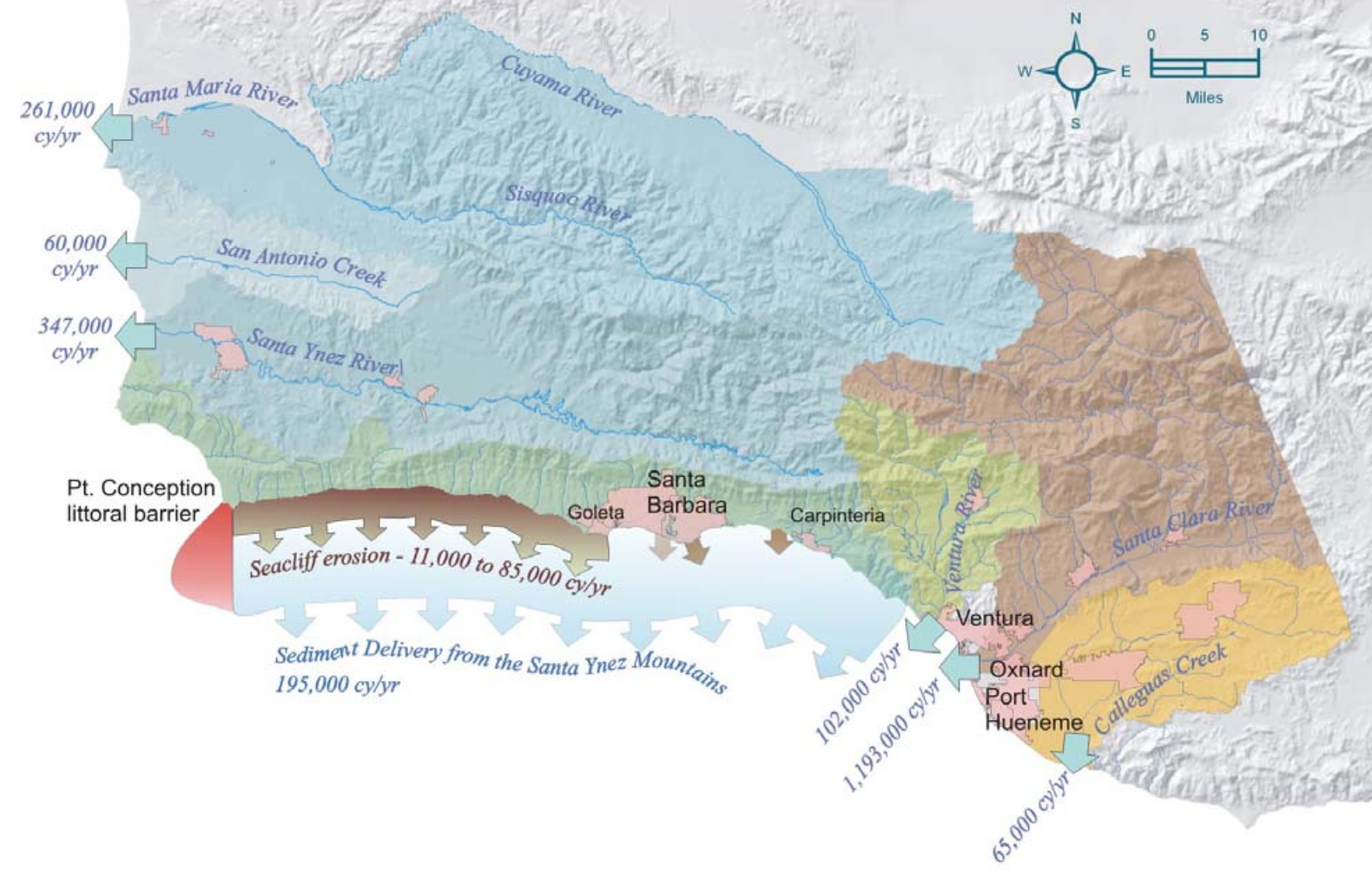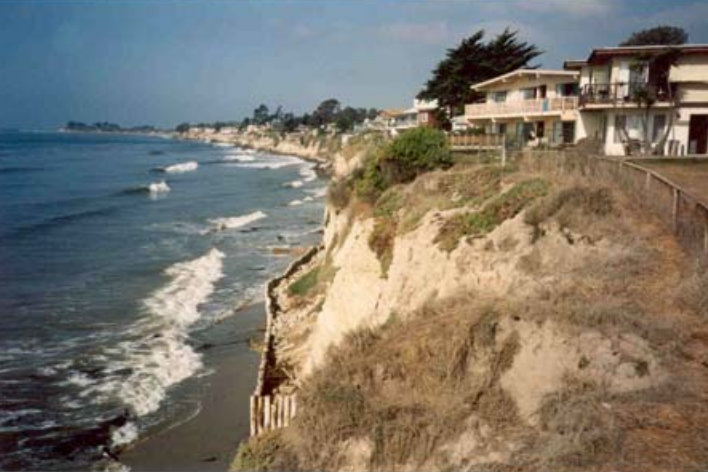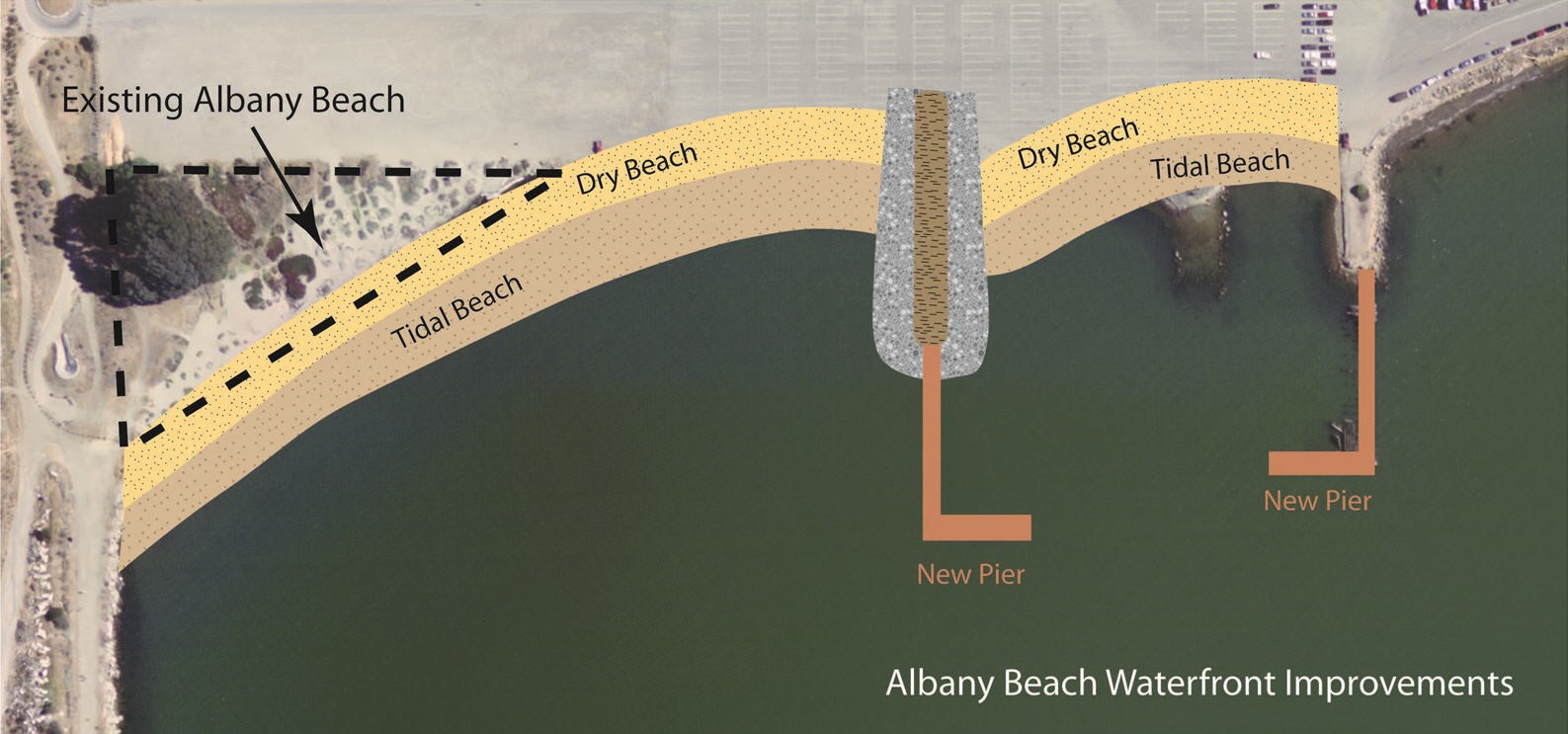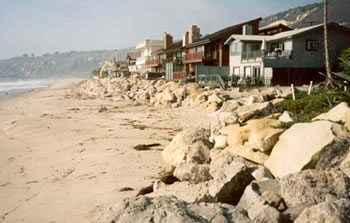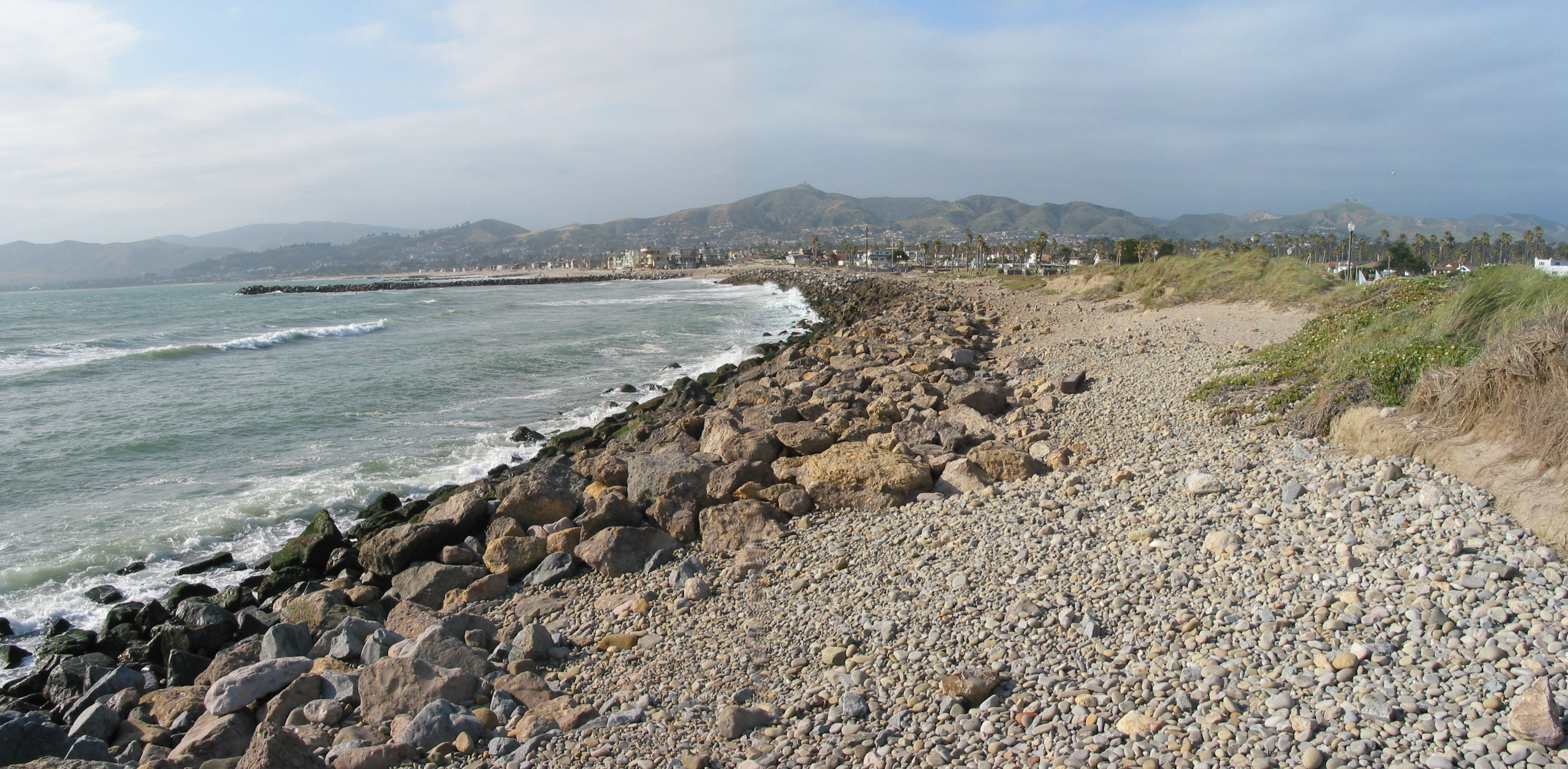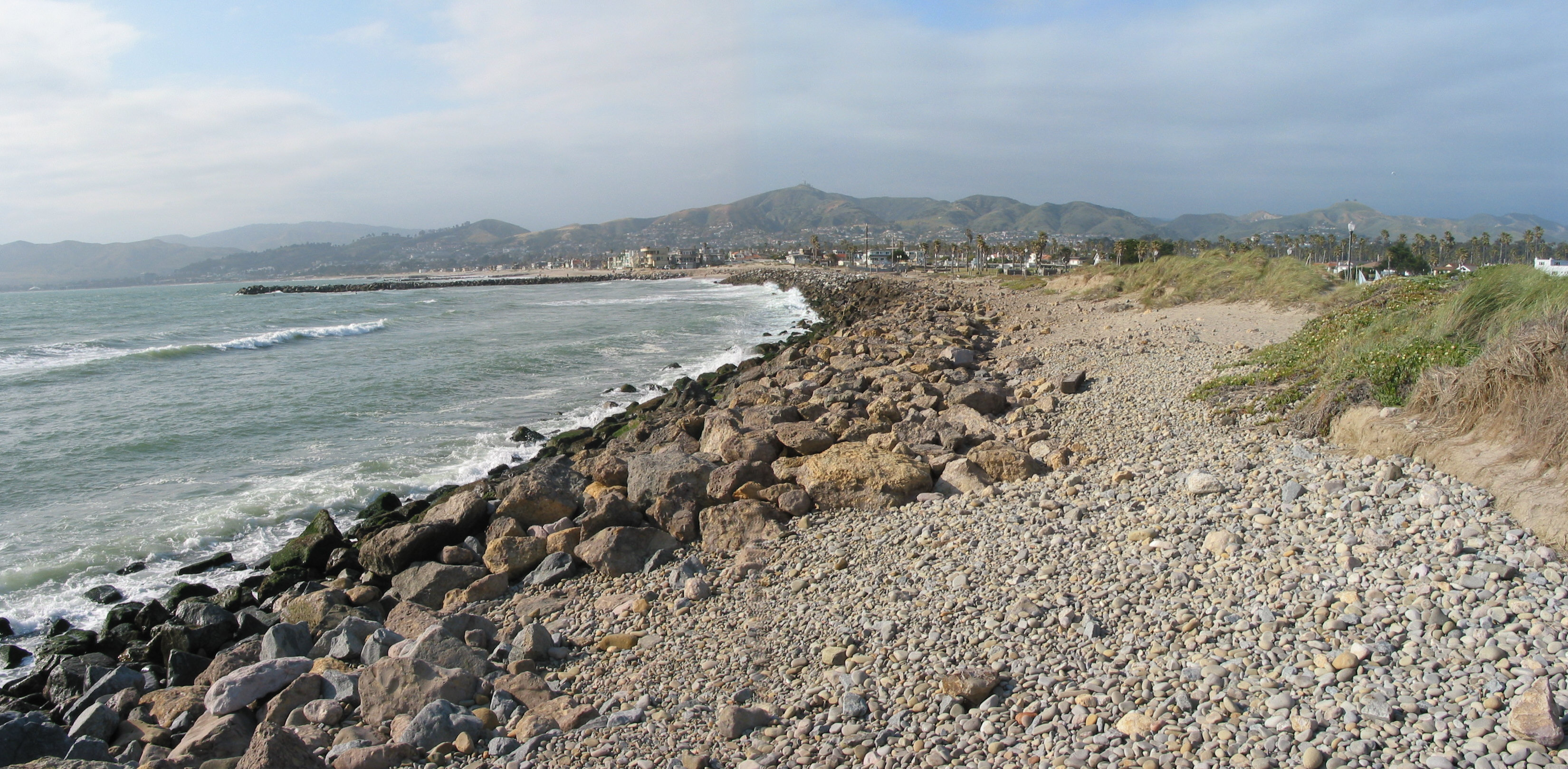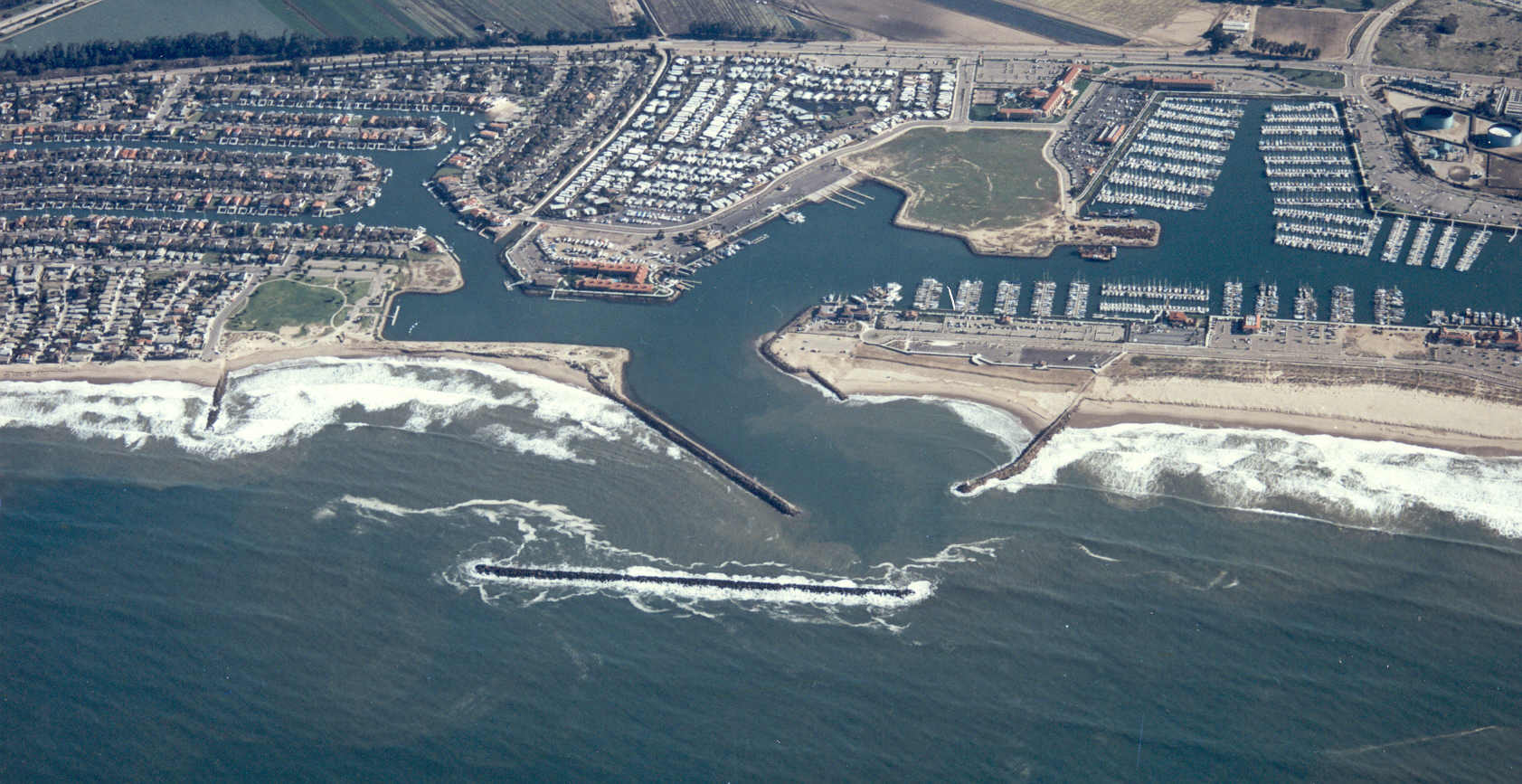Regional Sediment Management (RSM) is a planning approach that seeks to address coastal sediment processes on a broader geographic scale. It recognizes that sand, cobble, and fine sediment are important natural resources that are critical to the environmental health and economic vitality of the coastal zone. The relevant sediment processes overlap multiple geopolitical boundaries which explains why a regional planning perspective is needed.
California has been actively engaged in finding ways and means to resolve coastal erosion and sediment management issues on a broader scale. The State Resources Agency and its member Departments have joined together with the US Army Corps of Engineers and other advisory groups to form the Coastal Sediment Management Workgroup (CSMW). The CSMW intends to fulfill regional sediment management objectives by developing a series of regional Plans that are geographically specific to and target the distinct shoreline segments of the California coast.
The coastal regional sediment management plan (CRSMP) that was developed for the 144-mile long Santa Barbara Littoral Cell required consideration of a diverse coast that varies in shoreline orientation, physical characteristics, land use, and population density. The Plan’s goals and objectives included development of a comprehensive road map to addresses how to conserve and restore the valuable sediment resources, reduce shoreline erosion and coastal storm damages, protect sensitive environmental resources, increase natural sediment supply to the coast, preserve and enhance beaches, improve water quality along the shoreline, and optimize the beneficial use of material dredged from ports, harbors, and other opportunistic sediment sources.
The Plan was developed systematically using traditional planning processes to understand the baseline science and relevant physical processes; identify the challenges that currently exist and the corresponding opportunities that can be seized to positively move forward; and formulate appropriate action plans and solutions that have unanimity of purpose. The adopted Plan consists of a suite of equally diverse study, management, policy and capital project activities as summarized in Figure 1.
